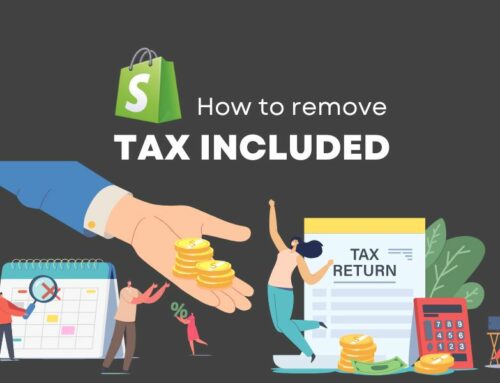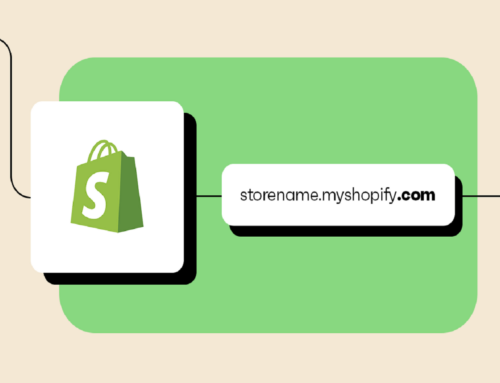When your e-commerce store begins to expand, it makes sense to have multiple Shopify stores to accommodate your expanding product line and regional markets. Having Shopify multiple stores allows business owners to vary their offerings and enhance sales.
Unfortunately, Shopify simply does not support the creation of several stores under a single account as a default feature. As a result, here’s where the issues arise:
- Is it possible to have multiple Shopify stores?
- Is it possible to open a new store under the same Shopify account?
- And, assuming you can, how will you manage them all?
This post will address these and other similar issues. We’ll explain why you should sell in several stores, the hurdles of doing so, and recommended practices for success in this post.
Let’s get started now!
Contents
- 1 Can You Have Multiple Shopify Stores In One Account?
- 2 When Do You Need Shopify Multiple Stores
- 3 The Easiest Way To Create Multiple Stores On Shopify
- 4 Common Issues Of Shopify Multiple Stores
- 5 Best Practices When You Have Shopify Multiple Stores
- 6 FAQs: Shopify Multiple Stores
- 7 Conclusion: Should You Consider Opening Shopify Multiple Stores?
Can You Have Multiple Shopify Stores In One Account?
You can not have numerous Shopify stores under one account, although Shopify allows and supports using different accounts to run various stores. Unfortunately, three standard Shopify plans, including Basic Shopify, Shopify, and Advanced Shopify, don’t allow you to run numerous Shopify stores from a single account.
Accounts must be created for each new store, with inventory managed through their individual Shopify accounts.
Because of Shopify’s versatility, you can create several Shopify stores with various plans under the same email address. This way allows you to send all of your communications to the exact location.
You must, however, log in to each account separately.
On the other hand, the better option is to use Shopify Plus. For example, after a terrible Black Friday, Gymshark moved from Magento to Shopify (using Shopify Plus multiple stores) and scaled up to 41M in sales in 2017.

This package is designed for high-volume businesses, starting at $2000 per month. You now own ten stores after purchasing Shopify Plus. Each additional store requires an additional $250 payment.
Helpful Tip: If you already have an eCommerce website on another platform that no longer fulfills your business needs, BSS Commerce can help you migrate to Shopify Plus. Especially, BSS will guarantee a smooth and secure relocation.
When Do You Need Shopify Multiple Stores
Starting International Selling
Global selling has become easy to manage due to the flexible logistics. There is no more daunting obstacle to selling globally than languages and currencies. As a result, you can quickly modify your website to satisfy other countries’ habits, attitudes, and cultural variations by having Shopify multiple stores, which are separate stores for each country.
For example, with a Shopify account, you can construct a store in India with a design different from the UK store. Also, you can consider each region to be a different market. Personalize each call by utilizing the most acceptable methods for that audience. Look at how Nike customizes their website for other areas like nike.com for the United States and nike.com for France.
Shopify, on the other hand, is increasingly focused on cross-border trading. Shopify Payments supports multi-currency right out of the box. They also offer geolocation for free via their app. Finally, install a translation program and make sure you’ve put up tax and shipping.
Furthermore, Shopify Markets was recently introduced, which is excellent news. It enables you to have a single store with numerous “markets,” allowing you to choose multiple currencies and languages at checkout based on where your critical consumers are.
Creating New Campaigns

It may sound unrelated, but creating multiple stores can help you free up obsolete inventory to make room for a new collection. Creating promotional campaigns on other stores separate from the main store will help you protect the brand value in customers’ eyes, particularly in the case of high-end clothing brands.
In addition, with multiple stores, you also have the freedom to limit customer groups. For example, you can create high discounts for wholesale customers.
More specifically, you can create two price points, one high and one low. In a luxury store, you can engage many types of customers, but a middle-class buyer can not patiently scroll to the end to find a product at the right price for them. You can also center the marketing campaign by narrowing your target customers by selling lower-priced stores.
Let’s take a look at Nordstrom and Nordstrom Rack as examples. Nordstrom Rack is Nordstrom’s off-price retail subsidiary. It is considerably different to appeal to a high-end consumer vs. a price-sensitive one. You wouldn’t want to blend those statements on a single website, which could harm your brand’s reputation. Hence, Nordstrom solves this issue by having two different locations for each.
Selling To Different Groups

Another benefit of having multi-store Shopify is that merchants may quickly expand their stores to new niches for different customer groups. They can utilize various sites to cater to other groups.
If you wish to offer your products to a worldwide market, you should consider tailoring your store to different countries.
Changing the language, currency, and design may be necessary to attract each target client group. Having many sites helps you customize your stores to appeal to various customers. However, this approach is not confined to targeting specific countries.
Businesses who want to appeal to different clients and businesses independently can use it.
Leveraging Shopify multiple stores, Fabletics began by offering low-cost sporting gear to ladies via a monthly subscription service. They subsequently created fab kids, which uses the same monthly benefit, but the garments are for everyday usage rather than athletic wear. Instead of a single site, they have two for each brand.
You are not required to use more than one storefront if you fall into one of these instances. But it’s probably worth thinking about the advantages.
The Easiest Way To Create Multiple Stores On Shopify
Upgrade To Shopify Plus – Creating Shopify Plus Multiple Stores In A Blink
The best option to get Shopify multiple stores is using Shopify Plus. Shopify Plus is only available to large businesses with extremely high traffic, which most store owners do not have.
If you are a massive company with $2,000 a month to invest in an eCommerce system, Shopify Plus provides an infinite number of stores. You get ten stores free with your plan, but each additional store costs $250 per month.

After upgrading, you will own ten stores after purchasing Shopify Plus. Each additional store requires an additional $250 payment.
You will think this alternative may be too expensive. Nevertheless, it not only helps you operate Shopify Plus multiple stores, but it also has more advanced features. See more HERE.
Use Separate Plans – Creating Shopify Multiple Stores With Different Accounts
Shopify retailers are most likely familiar with three plans: Basic Shopify, Shopify, and Advanced Shopify. However, none permit the creation of several Shopify stores on a single account.
As previously indicated, the only way to open Shopify multiple stores is to create individual accounts for each one. Even though you can register any of these stores using the same email address, they will run on separate Shopify accounts.
Otherwise, if you currently have a Shopify plan, such as Basic Shopify, the most straightforward approach to adding one or two more stores is to keep purchasing more plans. As a result, you must manage different accounts for each package purchased.

Read More: Shopify B2B Store – Should You Create A Separate One?
Common Issues Of Shopify Multiple Stores
While adding multiple Shopify stores appears to be a simple process, managing these various stores can be challenging. Sellers must deal with different stores’ separate orders, merchandise, and inventory data.
As a result, you must deal with several issues:
- Orders: You must manage orders on each website. It can become exceedingly problematic regarding the fulfillment and returns process.
- Inventory: If you offer some products on both sites, you’ll need to keep track of inventory as customers buy and return items to both.
- Products: If you routinely add new products to your catalog or categorize products into seasonal collections or price ranges, it is not easy to do so across many stores. Moreover, as you manage Shopify multiple stores, the way you prioritize and promote products across numerous storefronts can quickly get confusing.
- Integration: When running multiple branches, it will take some effort to integrate the other systems you use, such as ERP or POS, with each store you construct.
- SEO difficulties: You’ll have to spend twice as much time and effort developing two good domains, dealing with on-site SEO, and other related tasks if you have two Shopify businesses.
- Customer service: A flood of inquiries from several stores can be overwhelming and detrimental to the quality of your customer care.
To address the abovementioned difficulties, we suggest looking at the following practices for businesses with multi-store Shopify.
Best Practices When You Have Shopify Multiple Stores
While managing Shopify multiple stores can be difficult, the fear of doing so should not prevent you from developing your business! Follow these basic practices to make driving a multi-store strategy easier.
Optimize each website specifically
If your Shopify businesses represent multiple brands or target different audiences, the product information, copy, and design should reflect those distinctions.
Consider the many keywords that each target market is looking for. You should utilize the same language as your customers. You can use A/B testing software to test different types of copies to discover which ones convert the most clients.

See our post on Shopify SEO Guide: 6 Best SEO Apps for Shopify Site Optimization.
For example, if North America is your target market, you’ll need to optimize one store for the US market and another for our Canadian neighbors.
Your stores will not employ the exact sales keywords and blog topics because your primary markets will be looking for specific things. Specifically, you can utilize local keywords to increase the success of your website in its region. Besides, installing Google Analytics individually for each shop can help you study the consumer trends in that region.
You may also use country-specific discounts, specials, and local service pages to help customers choose the best retailer for them.
Consistency order management through one channel
When your trading volume is small, managing orders will not be complicated. However, once it gets bigger, especially during holiday sales, fulfilling orders from different stores is a big problem.
Instead of managing each order in different stores, you should be consistent in your fulfillment, refunds, customer service, and drop shipping operations.
The ideal approach is to send order data to a single, centralized system that manages orders across all internet sites. You can use a separate order management system and interface it with Shopify to automate activities such as fulfillment.
Manage inventory and orders through PIM
Although Shopify does not allow you to run several stores from a single account, there is a workaround that does not cost the $2,000 per month that Shopify Plus does.
A product inventory management (PIM) solution provides a centralized view of all of your stores. When you sync your stores in this manner, you only have to make one update to your inventory, product details, orders, and so on before it is shared across all of your stores.
If you dropship, you can sync your store with the supplier. That way, your consumers know what’s in and out of stock without you doing anything.

Pro Tip: BSS Commerce can assist you in extending the capabilities of your Shopify Plus multiple stores by integrating third-party systems, including PIM, ERP, CRM, and marketplaces. BSS seeks to provide a consistent and smooth eCommerce experience that adds value to businesses and customers.
Update inventory in real-time
When selling through various customer touchpoints, it’s critical that your inventory updates in real-time, especially if you’re offering the same things on several storefronts. Real-time inventory updates ensure that your items are never oversold.
The most effective technique to accomplish real-time inventory is to centralize inventory management. This guarantees that you keep track of inventory counts regardless of where it sells.
Save yourself the trouble of telling clients that you can’t mail them a product because you don’t have it.
Continuously work on SEO
You’ll need to investigate each store’s SEO to ensure you’re getting the most excellent exposure for your multi-store Shopify.
Using tools as we suggest in this post, compile a list of relevant high-ranking keywords and target them across your websites on a landing page:
- Headings
- Meta-titles
- ALT descriptions for images
However, the key to SEO is to make this a continual task to stay ahead of the competition. Also, avoid cannibalizing your keywords by targeting them across many stores.
Explore other app solutions
Numerous Shopify apps are available to help you manage Shopify multiple stores, which can help you back up and duplicate content in your shop.
Check out the Shopify app store for more valuable tools to help you manage your business more efficiently and improve your customers’ shopping experience. For instance, to enhance your B2B store, we suggest a B2B/Wholesale Solution app as an all-in-one solution.

When you analyze many of these best practices, you’ll see that most revolve around centralizing where you handle your data, whether it’s your orders, inventory, things, or customers. You can manage your Shopify multiple stores using the same processes by centralizing your data.
A system integration service, such as the one provided by BSS Commerce, is designed specifically for online businesses like yourself. A data integration platform handles data flow, so you have complete control, regardless of where it comes from or where it is going.
By integrating a third-party system, you can expand your multiple Shopify stores and additional sales channels such as marketplaces and brick-and-mortar stores.
FAQs: Shopify Multiple Stores
How Much Would It Cost To Run Multiple Stores On Shopify?
The cost of running numerous Shopify stores is determined by how you do it.
As previously indicated, there are two approaches to managing numerous Shopify stores. You can use different Shopify accounts to build multiple stores or upgrade to Shopify Plus.
The first choice will cost you the subscription charge multiplied by the number of stores. A basic Shopify account presently costs $29/month. Therefore two stores will cost you $58/month, and three will cost you $87/month, and so on.
Meanwhile, Shopify Plus options are tailored to each customer, although they begin at $2000 per month.
In addition, there are also other charges such as third-party apps, development services, etc. We cannot estimate the exact price for this extension because it depends on your needs and business size. You can refer to the Shopify development and Shopify Plus development price here.

How to Analyze Multiple Shopify Stores?
Analyzing company statistics such as conversion rate (CR), average order value (AOV), bound rate, audiences, and new niches is another crucial piece of advice for managing multiple Shopify stores.
Google Analytics and other similar technologies can assist you in determining which demographics comprise your core audience. As a result, you may design the ideal version of your stores and then optimize your niche-specific promotion strategies.
Can I Have Multiple Domains On Shopify?
Shopify only allows only one primary domain. In addition to your.myshopify.com URL, you can have up to ten domains or subdomains for your Shopify store. Those with a Shopify Plus membership can have up to 1000 domains or subdomains.
In reality, you can purchase as many third-party domains as you like, add them to your Shopify store, and then redirect them to your primary domain. You can also make a subdomain, such as blog.beariestore.com.
It is essential to understand that having several domains is not the same as having many Shopify stores. Having numerous domains is simply casting a giant net to attract more customers to one location.
Conclusion: Should You Consider Opening Shopify Multiple Stores?
Most Shopify sellers only need one store to offer their products. However, it is occasionally advantageous to open Shopify multiple stores for more considerable sales potential, better positioning, more targeted marketing efforts, and so on, resulting in superior overall outcomes.
It does, however, come with its own set of obstacles that, if ignored, might lead to failure. So, before launching a new store, consider your business goals, strategy, available resources, and the value it will provide you. Recognize all potential dangers and be careful of your decision.
And if you are sure of this, keep in mind that Shopify provides many beautiful tools to assist you along the route. You can manage individual stores from different Shopify plans or acquire Shopify Plus multiple stores. If you aren’t ready to commit, try Shopify’s 14-day free trial first to see how things work.
In a word, running multiple Shopify stores is a difficult mission. However, if you follow the best practices instructions, it is not difficult. You can use the tools that we recommended above.





